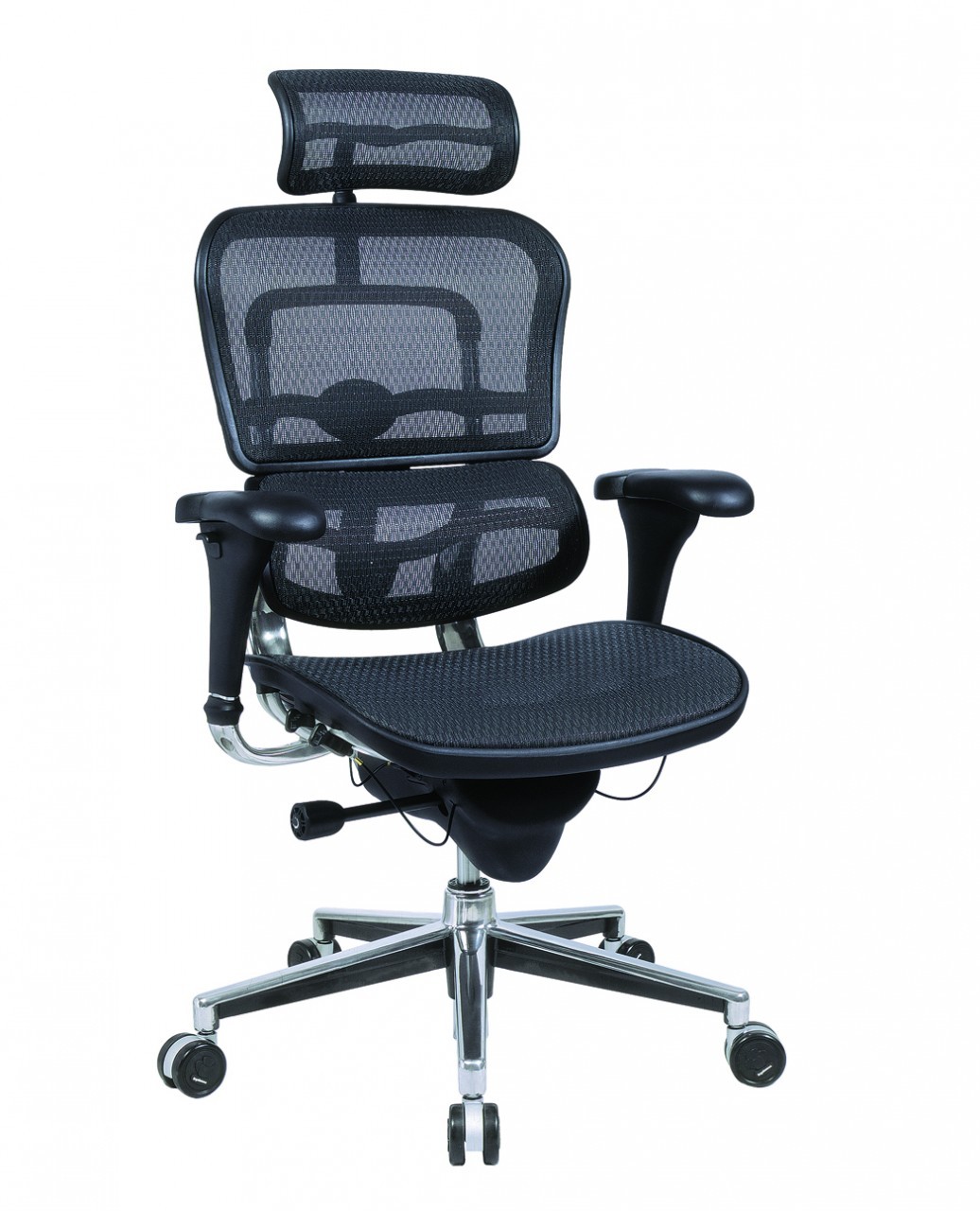Why do seating manufacturers continue to make chairs with high backs or additional “neck support”?
For our research team at Optimal we are asked this by our clients often enough that we thought we would quickly address this in our weekly Blog. The bottom line is we rarely recommend these seats and when we do there are very specific indicators as to when and how we do this.
High back chairs have been shown in biomechanical studies & in our own research to;
A. cause the end user/employee to move their heads forward into a flexed posture outside of the neutral range.
B. this forward head posture increases the EMG or muscle electrical activity within the neck muscles as these muscles attempt to counter the non-neutral neck posture & the secondary loading of the discs of the neck (see EMG study below).
C. this flexed neck posture changes the level of the end user/employees’ eyes relative to the monitor(s) location & height. This then results in an attempt by the employee to move the neck into an extended posture (a very extended posture when the employee is wearing readers or bifocals) with resulting axial loading through the neck’s vertebral bodies.
D. Healthy employees have no need to rest their heads into the back of a chair at any time as the muscles of the neck are able to hold the head and neck into neutral with minimal effort. On the other hand employees with neurovascular functional issues at the neck for example those with MS, ALS (Lou Gehrig’s Disease), Cerebral Palsy, or post operative muscle weakness may need to lean their heads fully into the backs of these chairs for periods of time through the day. In these cases high back chairs or chairs with the additional head supports are appropriate to be recommended and used.
The high back and neck height chairs on the market are really an attempt by the marketing departments of furniture and seating manufacturers to differentiate their products from the other chairs. These designs do NOT represent an ergonomic evidence-based r design approach. As in many of these cases FORM trumps FUNCTION to the detriment the end user and your company’s ergonomic program,
Individuals with neuro-muscular disabilities such as those listed above have a bone fide requirement for a higher back chair.
For the reasons outlined above plus the fact Optimal Performance only recommends products based on evidence, we will not recommend these types of chairs for most employees we assess. Unless there is an objective ergonomic related reason for a higher back chair you will not see the consultants at Optimal Performance recommend these.


